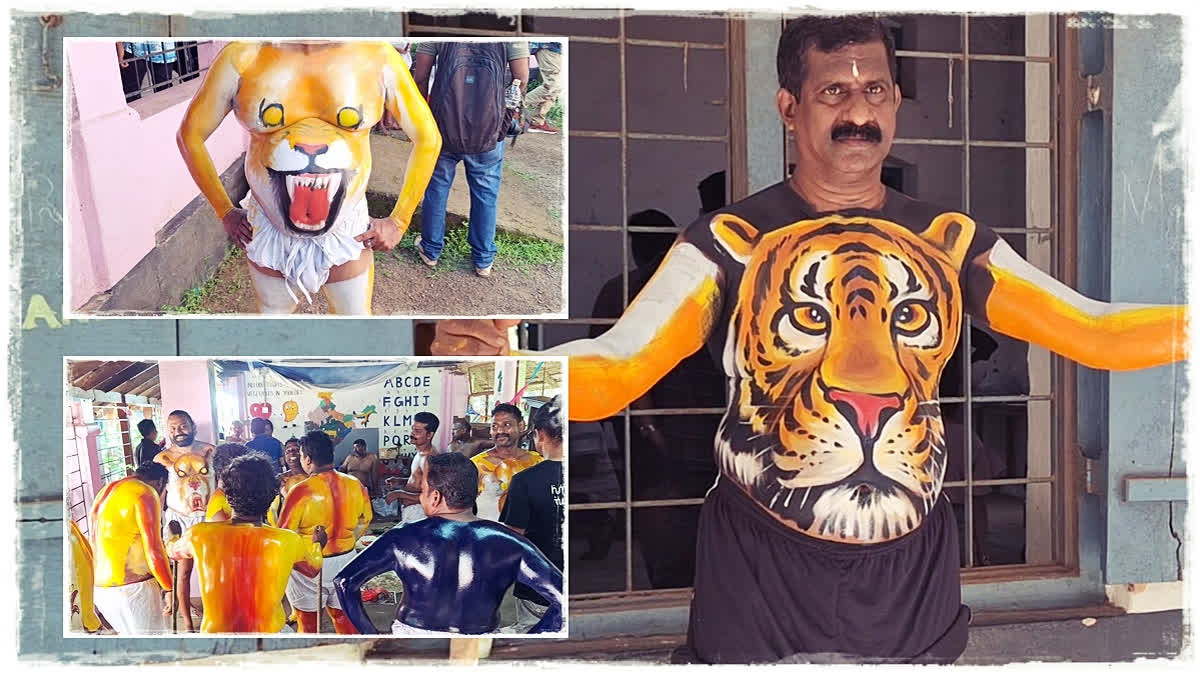Thrissur (Kerala):The vibrant festival of Pulikali, also known as the ‘Tiger Dance’, takes centre stage in Thrissur, Kerala, on Wednesday.
Around 400 participants, all dressed as tigers, are set to entertain the audience with their rhythmic dance this evening. They are part of seven different groups, known as Desams, named Seetharammill Desam, Chakkamukk, Viyyur Desam, Viyyur Yuvajana Sangham, Shankaramkulangara, Kanattukara, and Patturakkal.
The festival's main attraction is the intricate tiger face art painted on the performers' bodies. Applying the paint, ‘meyyezhuthu’ begins early morning on Pulikali day, with the desam members helping the participants turn into ferocious pulis. Regardless, how do these ensure the paints are irritation-free and gentle on the skin?
In the past, natural colours like charcoal and indigo were used to decorate the performers. However, these days, enamel paint has taken over as the primary choice.
Nikhil, an artist from Viyyur Desam, explains, “Combining enamel paint with gorilla powder and varnish gives us the mix with the right texture and sheen. The process requires rapt attention, as improper mixing can make the paint unusable.”
A few of the performers also apply coconut oil to their bodies before the paint is applied for skin protection. “However, this can delay the drying process,” notes Senthil, a pulikali artist.
